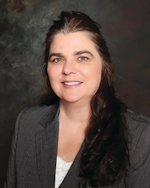Published March 16, 2020. Updated March 17, 2020, March 23, 2020, and August 7, 2020.
Editor's note: The COVID-19 pandemic is a rapidly developing situation, and information may quickly become outdated. Our editorial staff is reviewing updates daily. The information in this article may change as the situation evolves.
COVID-19 has had a negative impact on health-care professionals, including dentists, dental hygienists, and dental assistants. According to the World Health Organization (WHO), COVID-19 is spread through close contact with droplets from respiratory secretions and saliva, microdroplets, and contaminated surfaces, which puts the dental professional at risk.1 Recently the New England Journal of Medicine conducted an experiment analyzing SARS-CoV-2 that indicates aerosol and fomite transmission is conceivable. Furthermore, this study indicated that COVID-19 can remain viable in aerosols for hours and on untreated surfaces for days dependent on the amount of virus shed.2 The information assimilated in this document will help those in the dental profession reduce the risk of exposure.
Administrative and work practice controls
- Use preprocedural rinse of peroxide.2 The concentration of any rinse used should be at least 1.5%. Patients should rinse for at least 1 minute. Over-the-counter peroxide is typically 3%; therefore, one should dilute 1 part hydrogen peroxide to 2 parts water. In the dental industry, we have several products. Two examples are Colgate Peroxyl and Listerine Whitening Mouthrinse, both of which contain 1.5% peroxide. Also available is EverSmile which contains a 3.8% concentration of peroxide.
- Povidine-iodine rinses: Additionally, research supports a rinse of 0.2% povidine-iodine (PVP-I) for 15 seconds to reduce the presence of the virus.4 In the dental industry, we have proprietary and compounded rinses. One example of a commercially available product is ioRinse by ioTech International, which has shown a reduction of viral loads in the oral cavity and oropharynx. Caution should be used when incorporating PCP-I for a preprocedural rinse if your patient has an allergy to iodine.
- ALWAYS wear appropriate personal protective equipment (PPE) when working directly with patients.This includes safety glasses, gowns, lab jackets, face shields, gloves, and a mask appropriate for the task.
- Consider alternating levels of mask protection when performing activities to address mask shortage. The layering of lower level mask does not increase your protection.
- Level 1 mask (particulate filtration > 95%): Use when minimal risk of exposure exists. Ideal for procedures where there is a low amount of aerosols (e.g., patient exams, cleaning operatories, taking impressions, trimming/finishing/polishing temporaries, taking radiographs).
- Level 2 mask (particulate filtration 98%): Use when procedures create light to moderate amounts of aerosols. This includes limited oral surgery, endodontics, prophylaxis, restorative/composite, and sealants.
- Level 3 mask (particulate filtration 98%): Use when procedures create moderate to heavy amounts of aerosols. This includes complex oral surgeries, crown preparations, implant placement, periodontal surgery, use of ultrasonic scalers, and laser-based procedures
- What about N95 masks or respirators? N95 mask or respirators can reduce the dental provider's exposure to all airborne particles from large droplets to small aerosols. They must be custom fitted to each wearer and employees must have annual training for the N95. If a dental office elects to use N95 mask, they must have a written OSHA Respiratory Standard. Wearers of an N95 must have medical clearance to evaluate their ability to wear a respirator safely. They are not recommended for persons with facial hair, or some medical conditions. The CDC recommends that in times of shortage, as with the COVID-19 pandemic, only health-care professionals who work in a sterile field or may be exposed to high-velocity splash, spray, or splatter of blood, such as those in an operative or procedural setting, wear N95 respirators.5 Currently the ADA and CDC recommend N95 or equivalent masks for all aerosolizing procedures.
Patient screening
- Front desk staff should call and screen patients prior to their scheduled appointments. Additionally, staff should screen patients when arriving for their appointments.
- Reschedule any patient who discloses they have had flu-like symptoms that include a high fever, dry cough, or difficulty breathing. Or if they have been in contact with anyone who has tested positive for COVID-19 within the last 14 days.
- Request that patients inform your office if they develop symptoms or are diagnosed with COVID-19 following a dental appointment within 2 days of being physically present in your office.
General housekeeping
- Avoid direct handshaking, hugging, or greetings that require direct contact.
- Provide hand-sanitizer in all operatories, at the front desk, and in all bathrooms.
- Disinfect common areas including entry doors, reception chairs, and front desk counters throughout the day. Diluted household bleach will kill the virus.
- Wash hands often and refrain from touching your face—eyes, nose, and mouth. Encourage patients to wash hands when you call them into your room.
- COVID-19 is an enveloped virus which means that it is easily destroyed with appropriate disinfecting solutions.
- New CDC Guidance recommends a 15 minute wait after completion of clinical care of a patient with confirmed or suspected COVID-19 before preparing the operatory for another patient.5
- Remove static items, brochures, and trinkets from counters in operatories and in the waiting room. Place barriers on all items that cannot be easily disinfected.
Further information is available from the ADA, ADHA, and the CDC.
This article was updated March 17, 2020, to clarify information about preprocedural rinses and the author's stance on whether offices ought to see patients. It was updated again on March 23, 2020, to clarify information about the effectiveness of chlorhexidine against viruses. It was updated on August 7, 2020, to incorporate new recommendations released since dental practices reopened.
Copyright Athena Dental Solutions 2020
References
- World Health Organization. Transmission of SARS-CoV-2: implications for infection prevention precautions. July 9, 2020. Accessed July 26, 2020. https://www.who.int/news-room/commentaries/detail/transmission-of-sars-cov-2-implications-for-infection-prevention-precautions
- van Doremalen N, Bushmaker T, Morris DH, et al. Aerosol and Surface Stability of SARS-CoV-2 as Compared with SARS-CoV-1. N Engl J Med. 2020;382(16):1564-1567. doi:10.1056/NEJMc2004973
- Coronavirus frequently asked questions. American Dental Association. Updated March 11, 2020. Accessed March 17, 2020. https://success.ada.org/en/practice-management/patients/coronavirus-frequently-asked-questions#staff
- Bidra AS, Pelletier JS, Westover JB, Frank S, Brown SM, Tessema B. Rapid In-Vitro Inactivation of Severe Acute Respiratory Syndrome Coronavirus 2 (SARS-CoV-2) Using Povidone-Iodine Oral Antiseptic Rinse. J Prosthodont. 2020;29(6):529-533. doi:10.1111/jopr.13209
- Centers for Disease Control and Prevention. Guidance for dental settings: Interim infection prevention and control guidance for the dental settings during COVID19 response. Updated June 17, 2020. Accessed July 26, 2020. https://www.cdc.gov/coronavirus/2019-ncov/hcp/dental-settings.html
Lori Gordon Hendrick, MS, RDH, CDA, CDT, is a dental office infection control consultant. She practices clinical hygiene and functions as office manager in a busy private practice in North Carolina. She also owns and operates Athena Dental Solutions LLC, a dental lab and consulting business. She recently earned an MS certificate in global health. She has personal experience in developing and training dental office staff in OSHA, infection control, and HIPAA. Throughout her career in dentistry, she has experienced two OSHA inspections without any fines or penalties. She may be reached at [email protected].







